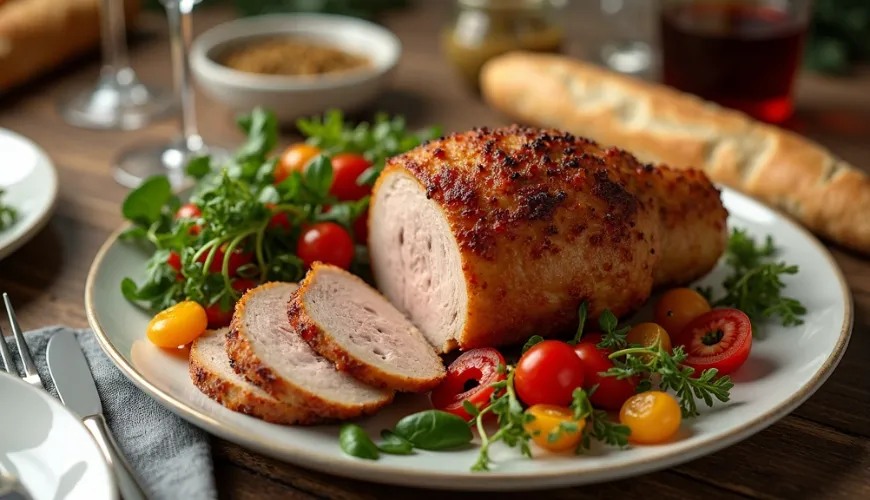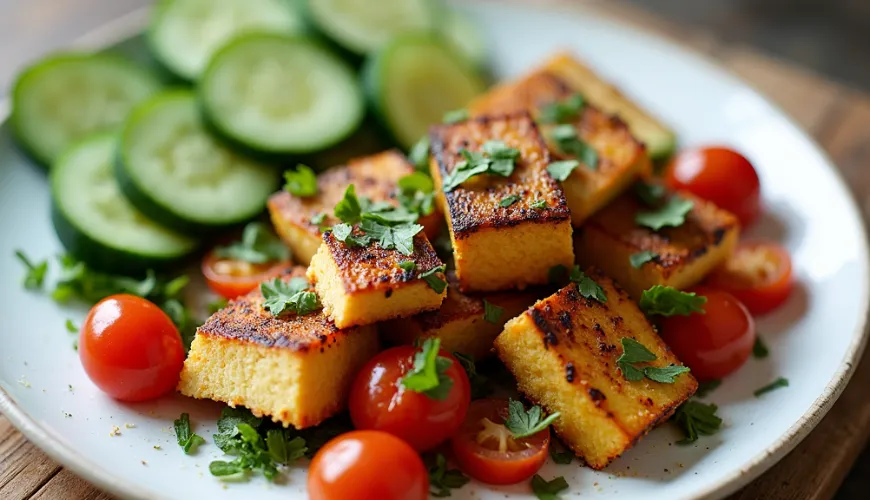
How to Prepare the Perfect Porchetta and Impress Your Loved Ones

The Secret of Perfect Porchetta - The Italian Art of Slow Roasting
The aroma of garlic, rosemary, and the crispy skin of slowly roasting meat. The sound of a knife softly crunching into a perfectly roasted pork roll. If there is a dish that embodies the essence of the Italian countryside, it is porchetta – a traditional delicacy that has become a symbol of authentic home cooking, yet today can be found in modern bistros around the world.
Porchetta is not just food. It is a ritual. It is a piece of history that has survived centuries and still tastes divinely the same. But what exactly is porchetta, and why is it winning the hearts of gourmets across continents?
What is Porchetta?
Italian porchetta is a slow-roasted roll of pork, traditionally made from a whole deboned piglet or pork belly with skin. Before roasting, the meat is richly seasoned with garlic, herbs such as rosemary, thyme, or fennel, and sometimes even lemon zest. It is then rolled into a tight roll, tied up, and roasted for several hours at a low temperature until the meat is juicy and the skin is beautifully crispy.
Originally, it was a rural specialty from the Lazio region, particularly from the outskirts of Rome. Today, porchetta can be found all over Italy – from Tuscan festivals to street stalls in Umbria. And not only that. Thanks to its flavor and seemingly simple preparation, porchetta has conquered gastronomy worldwide.
Traditional Porchetta Recipe - Simplicity that Deceives
At first glance, the recipe for pork porchetta may seem simple. After all, it's just meat, garlic, and herbs, you might say. But as with every traditional dish, the devil is in the detail.
Authentic porchetta is made from pork belly with skin, sometimes with a piece of deboned loin, to balance juiciness and firmness. The meat is laid out, sprinkled with salt and pepper, and coated with a mixture of mashed garlic, fresh herbs, and lemon zest. In some areas, crushed fennel is added for a typical aniseed flavor.
It is important to roll the roast tightly and tie it securely with string. Roasting then takes 3–5 hours in an oven or kiln, ideally with gradually lowering the temperature. The key is to slowly render the fat from the meat and evenly crisp the skin.
An inspiring story might be that of a family from Italian Umbria, who have been making porchetta following their grandmother’s recipe for three generations. Every first Sunday of the month, the whole village gathers, the aroma of roasted meat wafts through the streets, and neighbors share homemade bread, wine, and of course, porchetta. It is more than food – it is a social event.
Italian Porchetta at Home? Yes, and It's Not That Complicated
You might think – that sounds great, but making homemade porchetta is too complicated. The truth is, with a little patience and quality ingredients, you can manage it in a regular kitchen. The key is to choose the right piece of meat – ideally pork belly with skin, which you can find at a good butcher. You will also need garlic, fresh herbs (rosemary, thyme, sage), lemon zest, olive oil, salt, and pepper.
After seasoning and rolling, let the roast rest in the fridge overnight – the flavors will beautifully meld together. The next day, roast it first at a higher temperature to sear the skin, and then at 150–160 °C for several hours until the meat is tender and juicy.
One way to use porchetta is to make sandwiches. In Italy, panini con porchetta is a popular street food. All you need is a crispy baguette, a slice of porchetta, and a drop of mustard or homemade pesto. The result? An irresistible combination of flavors and textures.
Why Porchetta Is Coming Back into Fashion
In recent years, porchetta is experiencing a renaissance. Not only in Italy but also in the USA, France, and the Czech Republic, it is appearing in restaurants and home kitchens. Why? People are looking for authentic, honest food with history. And that's what porchetta offers.
Moreover, it is ideal for shared dining – one larger piece of meat can feed the whole family or a group of friends. Combined with roasted vegetables, potatoes, or a fresh salad, it makes for a festive meal that will be remembered. And if there's any leftover, it serves well in sandwiches or on a cold platter the next day.
Interestingly, even some vegetarian or vegan kitchens have been inspired by porchetta – using, for example, roasted celery or tempeh seasoned with similar herbs and spices. While the result won't taste exactly the same, the idea of a shared dish with rich flavor remains.
A Little Glossary of Porchetta
To avoid getting lost in the terminology, let's clarify a few basic terms:
- Porchetta – roasted pork roll with herbs and crispy skin
- Porchetta di Ariccia – protected designation of origin from the Lazio region, known for its mild fat and gentle seasoning
- Panino con porchetta – sandwich with slices of porchetta, typical for street stalls
- Porchettare – a verb used by Italians meaning "to prepare porchetta"
To quote the famous Italian chef Massimo Bottura: “Traditional recipes are not binding; they are stories we tell ourselves. And porchetta is one of the tastiest.”
Porchetta is proof that with minimal ingredients and a little patience, you can create a dish that amazes. And even though its preparation may seem lengthy, the result is worth it. It is no wonder that this recipe has found its way into Czech kitchens – after all, pork and the aroma of herbs are a combination we love here too.
So next time you plan a family lunch or celebration, try making a hearty homemade porchetta instead of the traditional roast. You might find that you have discovered a new favorite dish – and with it, a piece of sunny Italy.

